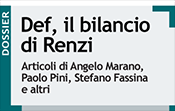Ultimi link in questa sezione
Le chiavi del successo cileno
President Obama’s 4-day visit to Chile, Brazil, and El Salvador starts this Saturday and brings issues of trade and economic opportunity between Latin America and the U.S. to the fore. In this post, Ricardo Ffrench-Davis identifies the specific policies that have driven the Chile’s high economic growth since 1973, particularly the strict regulation of the country’s capital account in the 1990s.
Chile is frequently presented as a paradigmatic case of successful economic reforms, by quite different authorities. Usually, these accounts sustain the ill-informed belief that there is one “Chilean model” responsible for success in recent decades. The fact is that in the nearly forty years that have elapsed since 1973 there have been several sub-periods, with significantly different policy approaches, heterogeneous external environments, and notably diverse economic and social outcomes. There is neither only one model nor only one outcome, as we show in our recent book, Economic Reforms in Chile: From Dictatorship to Democracy.
The first stage of the reforms (1973-81), launched after the military coup of 1973, was characterized by the implementation of a neo-liberal model in its purest and most ideological form. Deep trade and financial liberalization, and the adoption of “neutral” economic policies, were accompanied by massive privatization. By 1981, success had been achieved in reducing inflation and eliminating the fiscal deficit, but at the expense of the external balance and a huge debt (with a notably low investment ratio). The consequence of this disequilibria of the real economy was a collapse in 1982, with a 14% drop in GDP, 30% unemployment, a huge increase in poverty, and a worsening income distribution.
The second stage (1982-89) was characterized by moves, by the same dictatorship, toward more pragmatic policies to overcome the deep crisis. It involved a series of public interventions (sharply criticized in the first stage), including tariff increases and “selective” export incentives, strict regulation of financial markets, and the take-over of collapsed private banks, and then privatizing them again when their balance sheets were in order thanks to public subsidies to banks and debtors (costing 35% of GDP). At the end of this period, the economy had recovered, while income distribution had worsened even further. During recovery, actual GDP grew vigorously, but after considering the 1982 recession, the average annual growth was a mediocre 2.9%.
By 1990, in the return to democracy, the Chilean economy faced the challenges of achieving a sustained high average growth and of serving the great social debt accumulated during the dictatorship. Thus, a third variant of the economic model began in 1990. The approach of Concertación Democrática, a center-left coalition of socialists and Christian democrats, was “change with stability, for achieving growth with equity”. There were significant reforms of the market model. It included labor reforms (that restored several labor rights), a tax reform (that raised public revenue geared to improve social expenditure), and a substantive counter-cyclical reform in macroeconomic policies. These were implemented in capital account, exchange rate, monetary and regulation policies, under the view that the equilibrium of the “real” economy was crucial for growth with equity. It was in this context that Chile expanded its productive capacity in a sustainable manner in the nineties, recording an annual average GDP growth of 7.1% in 1990-98, with some improvement in income distribution and a sharp drop in poverty.
One outstanding feature of this period, to which I devote a full chapter in the book, was the regulation of the capital account, with a flexible reserve requirement (encaje), quite active in these years of large supply of flows to the emerging economies. The counter-cyclical active regulation helped control the volume of flows, to shift its composition to the long term and their allocation in productive investment, and avoided undue exchange rate appreciation and instability. The real economy benefited from comprehensive real macroeconomic stability. The reward was high growth with improved income distribution, as documented in the book.
Paradoxically, during the late 1990s Chile (actually, the autonomous Central Bank) gradually moved toward the neo-liberal fashion of capital account and exchange rate liberalization. As a consequence, the exchange rate and domestic demand came to be led by financial flows, and fell victim to their volatility. There was an adoption of a “financieristic” macroeconomics, at the expense of sustained growth and equity. I stressed this issue throughout the book because of its high relevance to the future.
I document how this policy counter-reform has been a key determinant of the worsening performance of the Chilean economy in the second decade of return to democracy. In 1999-2008 (before the 2009 drop), growth averaged a modest 3.7%, and per capita income growth halved. Slower growth aside, this still was quite better than the 2.9% average of the dictatorship. Different policies produce diverse outcomes.
The performance of the four Concertación governments is notably superior to that of the dictatorship: per capita GDP growth averaged 3.6% and 1.3%, respectively. Different policies, diverse outcomes. Additionally, by 2009 social policy had established a stronger presence, which is reflected in the improved distribution figures compared to earlier measures in 1999-2005, this in spite of weaknesses in labor markets and economic growth. Nonetheless, inequality is still shamefully high, mostly generated by regressive features of the labor and financial markets and weaknesses in the quality of education.
The economic agenda requires deep further reforms to “complete” long-term innovative financing for development (with a SMEs bias), labor training and technological innovation. And, returning to macroeconomic policies for development, including, at the top of the list, regulation of speculative capital inflows.










